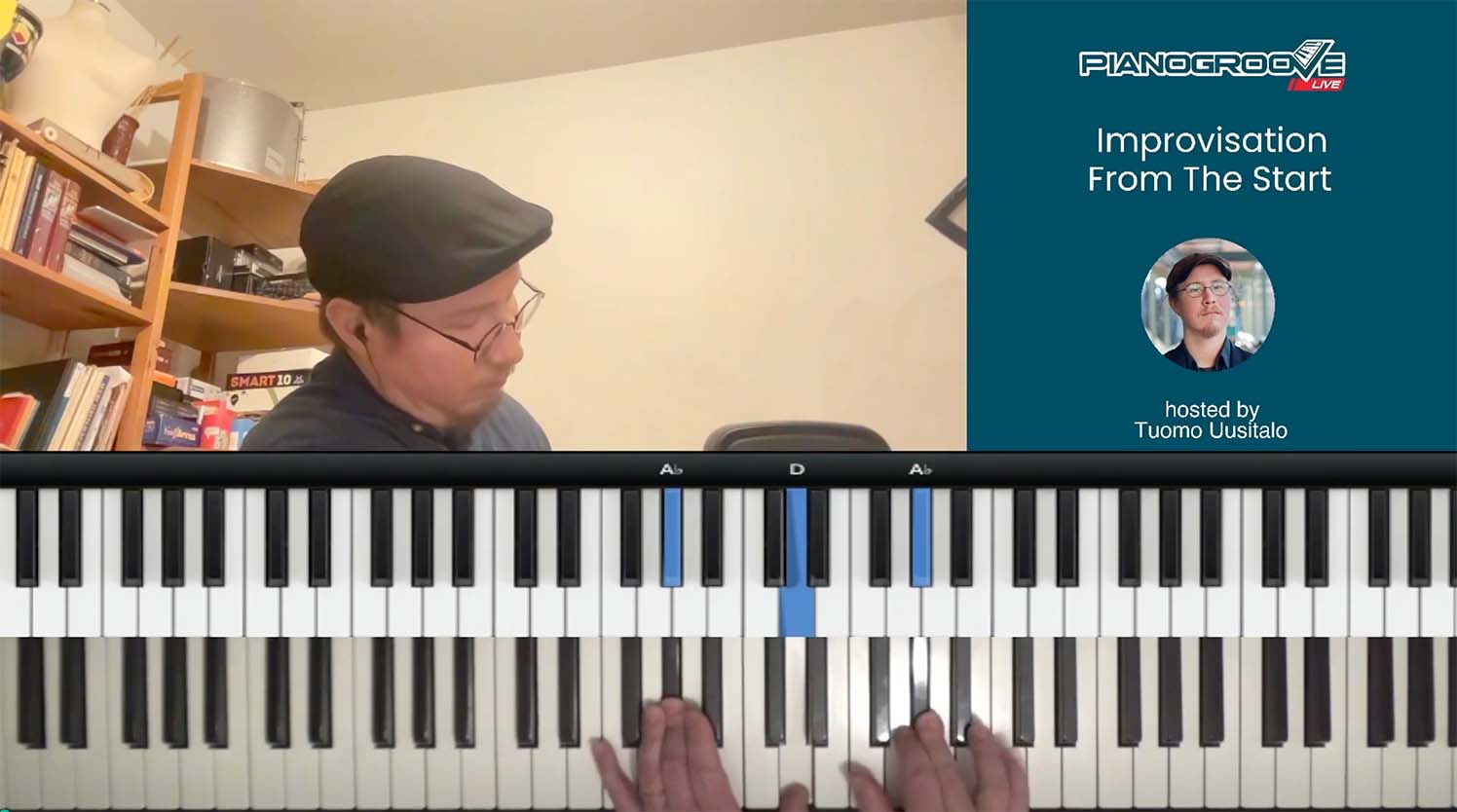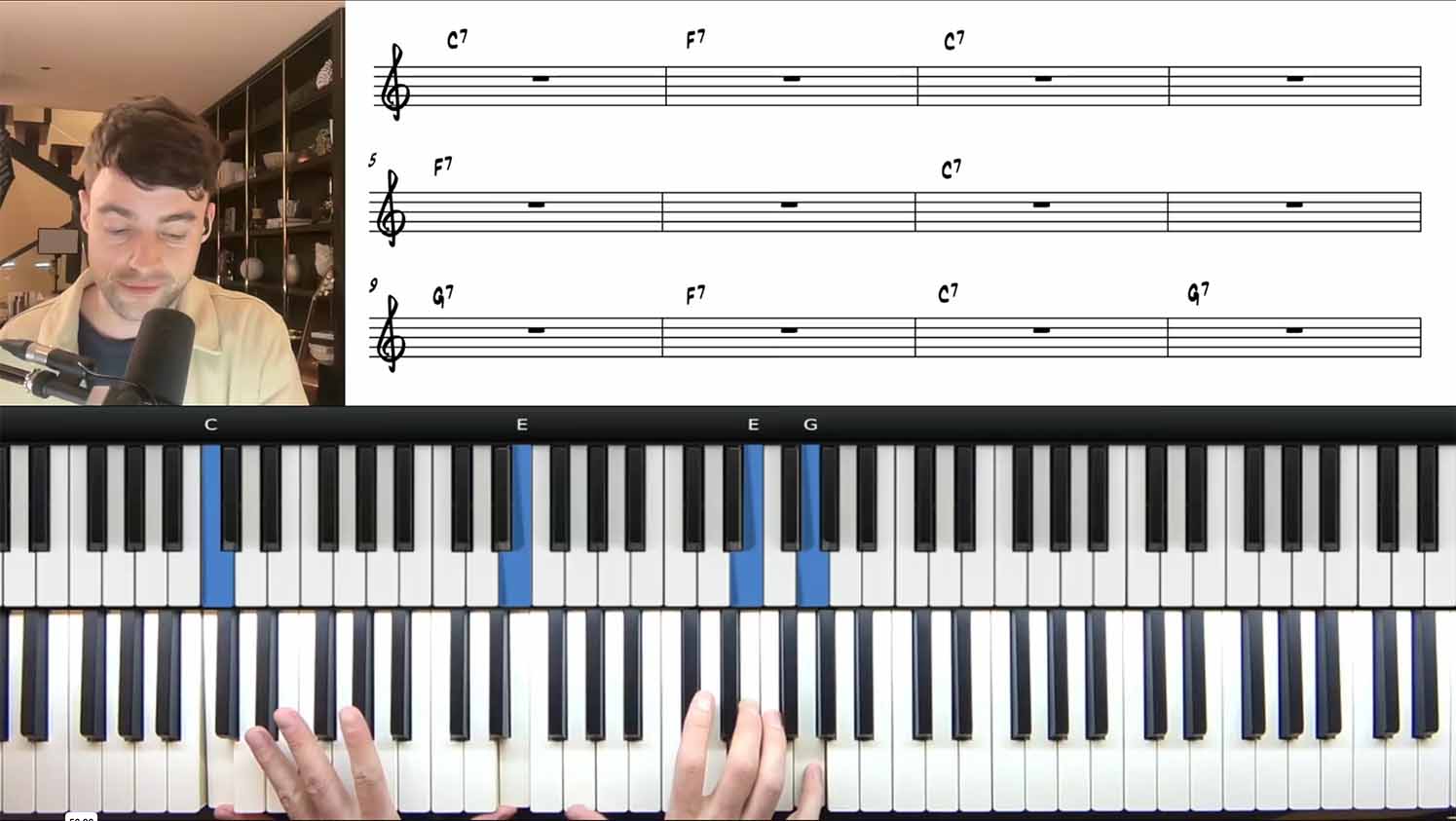

Tuomo Uusitalo
Tuomo is an award-winning pianist, composer, arranger and educator. Having released two albums as a leader, he has established himself in the New York jazz scene and continues touring internationally both as a leader as well as sideman.
Live Seminar Resources
Live Seminar Resources
PDF Downloads
- Improv Workshop 1 - Homework
Join PianoGroove Pro to access all downloads and learning resources.
Download theory supplements, midi files, chord changes and full note-for-note transcriptions of every lesson.
- Blues In F - Form
Join PianoGroove Pro to access all downloads and learning resources.
Download theory supplements, midi files, chord changes and full note-for-note transcriptions of every lesson.
- Jazz Blues Backing Track
Join PianoGroove Pro to access all downloads and learning resources.
Download theory supplements, midi files, chord changes and full note-for-note transcriptions of every lesson.
Forum Threads
Seminar Description
Seminar Description
Introduction to Jazz Improvisation for Beginners
Welcome to the first session in our March Improvisation Seminars. In this lesson, we introduce the foundational elements of jazz improvisation, focusing on rhythm, chord tones, and developing a natural feel for improvising over the blues form.
Improvisation is an essential skill for jazz musicians, allowing for personal expression and spontaneous creativity. Whether you’re just starting or looking to refine your approach, this lesson will provide a structured yet flexible framework to develop your improvisational skills.
Understanding Improvisation
Improvisation is often described as spontaneous composition—creating melodies in real-time while following a harmonic structure. While it might seem like complete freedom, effective improvisation is built on familiar patterns, chord structures, and rhythmic control.
In jazz, improvisation has evolved through various styles, from the swing era’s simple melodic embellishments to bebop’s intricate harmonic language. Recognizing chord movements and playing within the framework of a song’s form are key skills that help musicians navigate and interact dynamically with the music.
The Importance of Rhythm in Jazz
One of the most crucial but overlooked aspects of improvisation is rhythmic accuracy and feel. The best improvisers have a strong rhythmic foundation that allows them to create compelling musical phrases.
To develop a better sense of rhythm:
- Practice playing simple ideas with quarter-note phrasing before adding syncopation.
- Listen to great jazz recordings and focus on the rhythmic placement of soloists.
- Use a metronome or a backing track to play in time without rushing or dragging.
Chord Tones: The Building Blocks of Improvisation
Rather than relying solely on scales, improvising with chord tones (1, 3, 5, and 7) leads to stronger melodic lines. By focusing on these core notes, your phrases will naturally outline the harmony, making your solos sound more connected to the chord progression.
For this lesson, we will focus on improvising over an F Blues progression, using only the essential chord tones to build melodic ideas.
Practical Application: Improvising Over an F Blues
To apply these concepts, practice improvising over a 12-bar blues in F using a simple backing track. Start with just the root note and experiment with different rhythmic patterns. Gradually introduce more chord tones, keeping your phrases clear and intentional.
Key exercises to try:
- Play only the root note (F) and experiment with different rhythms.
- Add the 3rd and 7th of each chord to create strong harmonic connections.
- Keep your lines simple and focus on locking into the groove.
5 Practice Tips for Jazz Improvisation
- Start with rhythm – Focus on playing strong rhythmic phrases before adding complexity.
- Use chord tones – Prioritize 1, 3, 5, and 7 to create melodic lines that clearly outline the harmony.
- Limit your note choices – Restrict yourself to a few notes and experiment with phrasing.
- Listen and imitate – Transcribe and absorb rhythmic and melodic ideas from jazz recordings.
- Keep it simple – Great solos come from strong fundamentals, not excessive complexity.
By focusing on these foundational elements, you will build a solid base for confident and expressive improvisation. As you progress, you’ll naturally develop your unique voice as an improviser.
Stay engaged in the community forums, share your recordings, and continue experimenting with the ideas covered in this lesson. See you in the next seminar! 🎶









Very satisfying workshop, Tuomo. I couldn’t be here live but I’ve replayed the improv examples multiple times and got more clarity each time. Thanks.
Hi Lonnie, thank you for writing!
Let me know if you have any further questions!
-Tuomo
I started working on this and thought why do Tuomo’s simple chords sound so much better than my simple chords. I studied the recording and realized the answer was rootless voicings with the 7th often on the bottom. (Also the nice soft but bouncy attack). So I am getting comfortable with these chords while working on the improv.
I also find in the improv that I quickly fall into cliches, having listened to more blues than I care to.
Smbruker
Sounds great, keep up the good work!
Hope to see you in the 3rd improv seminar!
-Tuomo